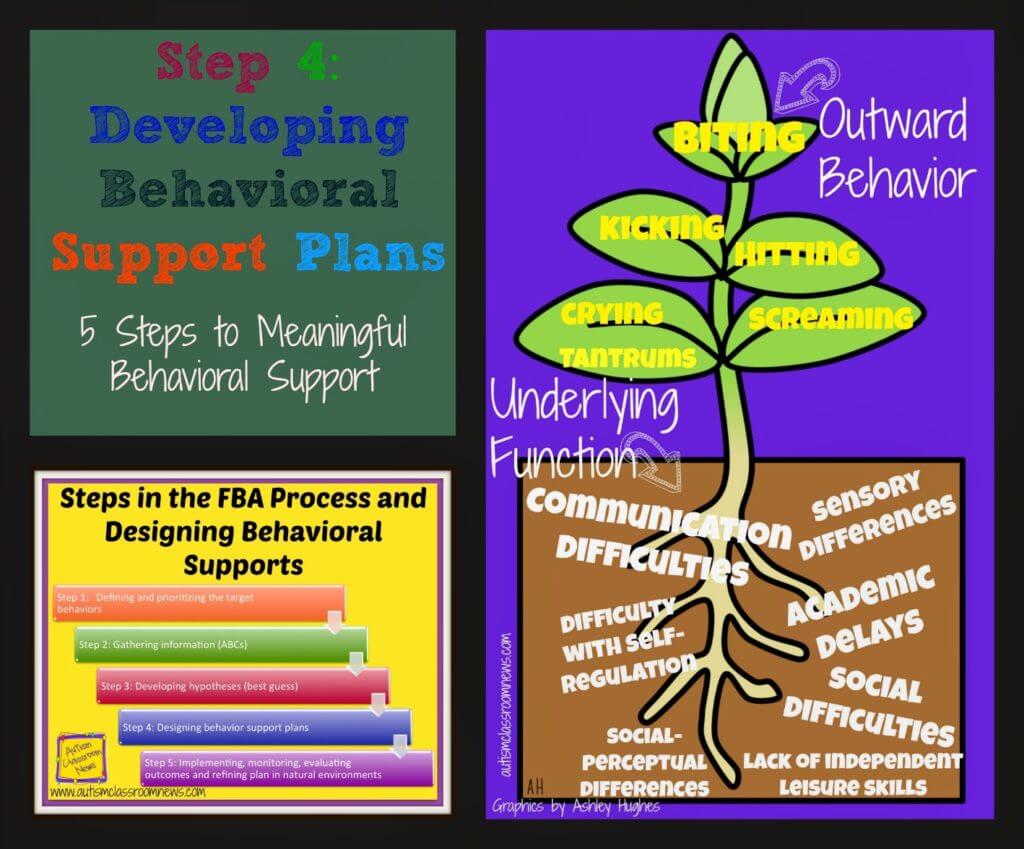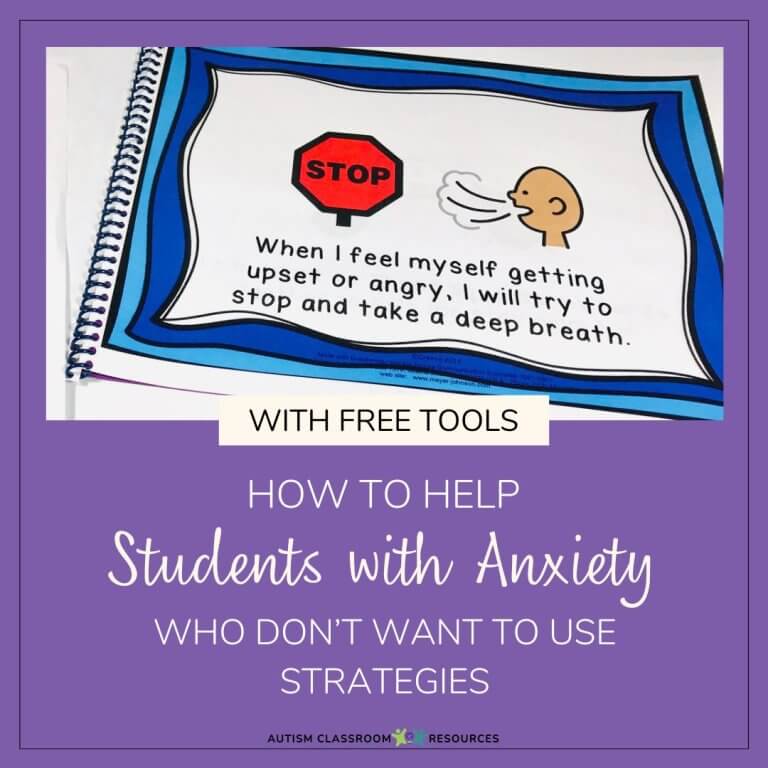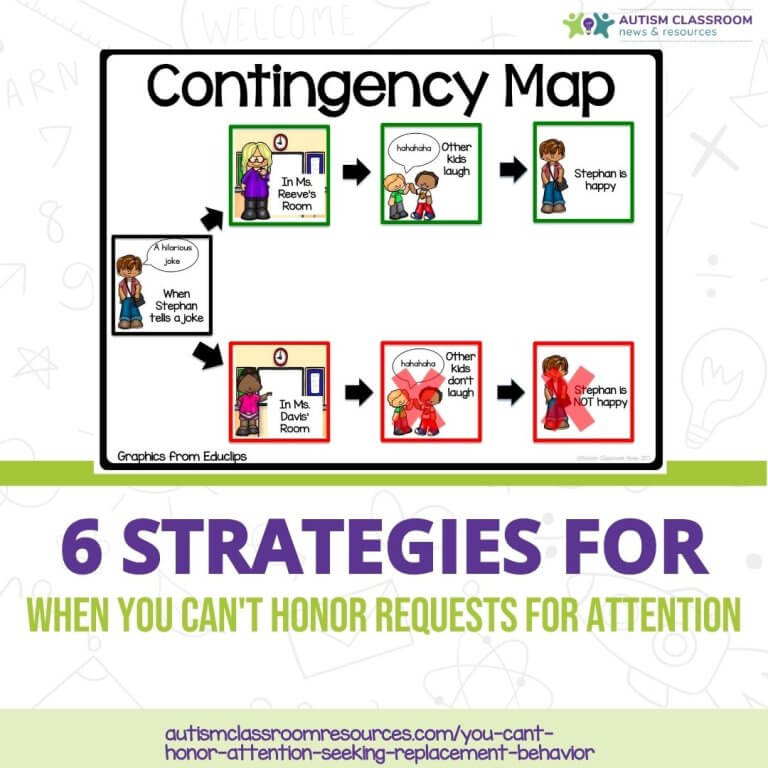Sharing is caring!
To see other posts in this series, click HERE.
So, we have completed our functional behavior assessment of behavior and developed hypotheses of the functions of the problem behavior. In a sense we have gotten to the root of the problem. So, now what do we do about it? We need to develop a behavioral support plan.
It seems like a behavioral support plan would be a pretty straightforward thing to understand, but there is actually a good bit of confusion and disagreement about what the term means. You notice I don’t call it a behavior management plan or a behavior intervention plan. It serves that function, but I think that a behavioral support plan includes much more and focuses on how to support the individual while reducing challenging behavior rather than just a discipline or crisis plan or a management plan that attempts to just get rid of the behavior. The most important thing about behavioral support is that we not only reduce the challenging behavior but that we improve the quality of life of the individual we are working with. So I thought I would start this step by talking about what a behavior support plan is and is not to help define what we are aiming to develop in this step. We will talk more about the qualities of a good behavioral support plan in future posts. I’m going to start with what it is not and end with what it is to lead into those.
What a behavior support plan is NOT:
A behavior plan is not just a crisis plan. It is not a plan that only tells us how to react or respond to the behavior. That is part of the plan, because we all need to know how to respond to the behavior when it happens. However, there is much more that needs to be addressed in the plan than just what to do in a crisis.
A behavior plan is not just a discipline plan. Again, while we need to have information about how violations of code of conduct of the school will be addressed for the individual or what punishment consequences will be used, that’s not enough. I have discussed that discipline and expecting appropriate behavior is not enough. We need to have strategies for preventing and replacing the behaviors to address the function.
A behavior plan is not a plan that is written by one person who is the “expert” or “in charge.” These plans rarely are effective. Plans are best developed by teams of people who work together to find strategies that match the function and information from the FBA.
So, What IS a Behavior Support Plan?
Prevention: A behavior support plan is a document that tells us how to prevent the challenging behavior–what antecedents we can change or remove to keep from triggering the behavior. It uses the FBA information to help us figure out which antecedents we need to address. For instance, if letting the student know ahead of time that a transition is upcoming, that would be included in the plan.
Replacement: A behavior support plan includes information about what skills are being taught to replace the challenging behavior. These are the behaviors that are appropriate but serve the same function as the challenging behavior. For instance, learning to call someone’s name for attention. It should include information about how to teach the skill so the staff knows what to do and what will be implemented. While this information may also take the form of goals in the IEP, it is important that it still be in the plan so that everyone is reminded of the need to facilitate and teach the skills. The great thing about a positive behavioral support approach is that we can teach the behaviors we want to see when the challenging behavior isn’t happening. And everyone is more amenable to instruction when they aren’t in the middle of a crisis.
Teaching: The plan also should include information about other skills we want to teach the student that will be helpful in improving quality of life but may not serve the same function. For instance, we might use a token system to reinforce a student to being in his seat when we check every 5 minutes. This doesn’t address the function of why he gets out of his seat, but it does increase the balance of reinforcement to make a behavior that is incompatible (can’t be in and out of seat at the same time) more likely to occur.
Response: The plan should also include information about what the response to the challenging behavior should be. Everyone needs to have a consistent response to the behavior when it can’t be prevented. While we are teaching replacement skills, there is a learning curve and the behavior is bound to happen sometimes despite our best efforts. We want to make sure that we are not reinforcing the problem behavior with our reaction and we want to make sure that everyone is safe. I’ll talk more about the need for the crisis portion of the plan later, but in short it is better to discuss as a team how we are going to address a behavior that could harm someone when there isn’t an impending crisis than when there is. Trust me on this one.
Team-Developed: And finally the plan should be developed by a team, not by an expert. There is research that supports this. Brenazzi and Horner found that plans that were developed by a team that included a person who had expertise in behavior analysis were more likely to be technically proficient (i.e., effective) and implemented than plans that were developed by teams without expertise in ABA and than plans developed by experts alone. Teams are good and assure that the strategies can be implemented as well as that they are based on the information from the FBA.
So, that is where I will pick up with the next post is to talk more about these areas of the plan and a format for putting it together. In the meantime, what do you think is important to include in a behavior support plan?
Until next time,










